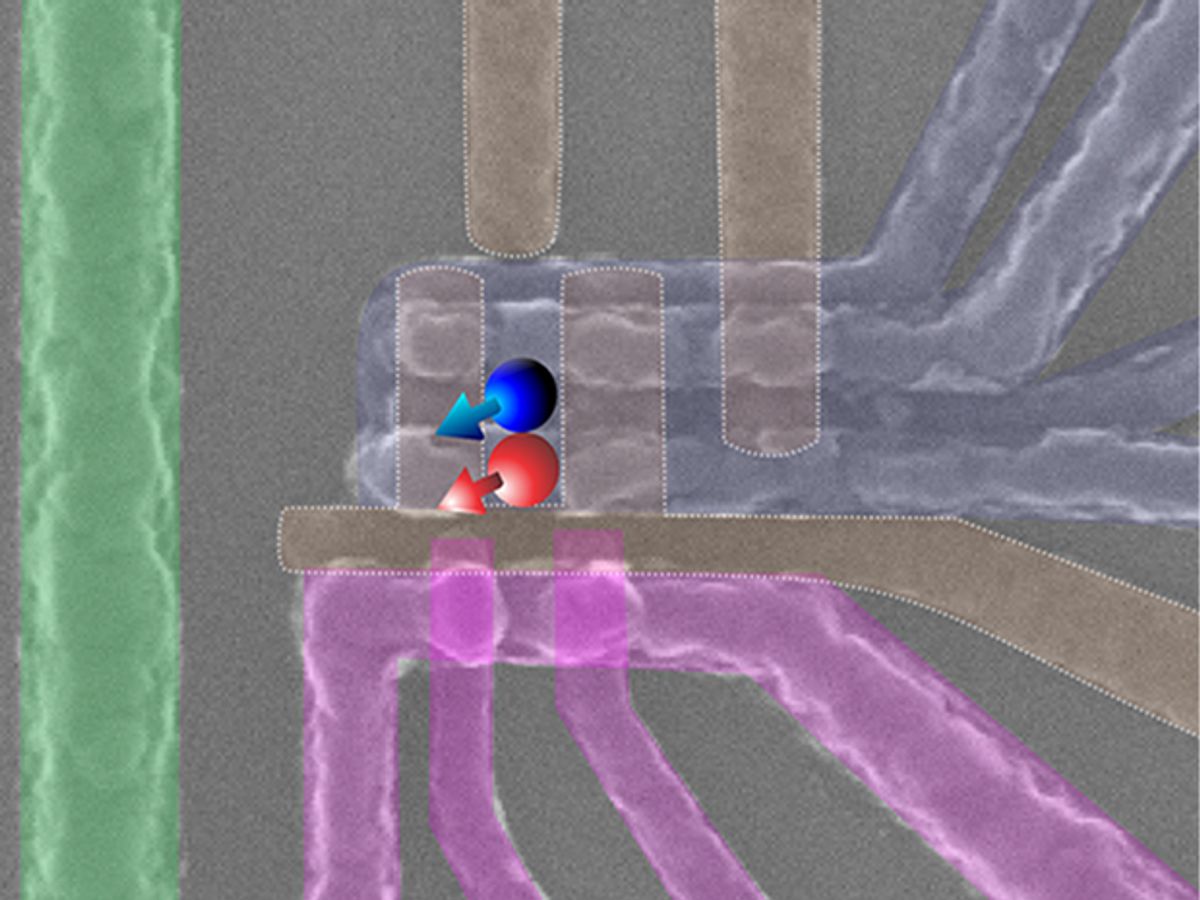Qubits come in several flavors: atoms suspended by laser beams, photons trapped in microwave cavities, superconducting rings in which currents can run in two directions simultaneously. David DiVincenzo (a theoretical physicist at RWTH Aachen University in Germany, recently interviewed by Spectrum) and Daniel Loss proposed in 1998 using the spin state of electrons trapped in quantum dots to store quantum bits, and many view this as the most promising approach to quantum computing.
Last week researchers at the University of New South Wales (UNSW) in Sidney, Australia, reported in the journal Nature that such trapped electrons can be integrated with existing CMOS technology, and that it might be possible to create quantum computer chips that could store thousands, even millions of qubits on a single silicon processor chip.
In ordinary computing the NAND logic operation is special, because you can build any other boolean logic gate from a combination of NAND. The UNSW researchers created for the first time quantum computing’s fundamental gate: the controlled NOT or CNOT gate. Depending on the state of the control qubit, the CNOT gate changes an "up" spin into a "down" spin, and the other way around. "This is the most rudimentary calculation one can do between two qubits. What we have done is the equivalent of the NAND gate, the classical digital logic," says Andrew Dzurak, a semiconductor physicist at UNSW who led the research group. All computations in classical computers are based on circuitry made up of CNOT gates, explains Dzurak. "Every quantum computation can be made up of a combination of one- and two-qubit gates," he says.
UNSW’s device keeps two electrons, about 100 nanometers apart from each other trapped in a layer of silicon. Scientists have created single qubits in silicon that consist of trapped electrons whose spin can be controlled. The quantum CNOT gate however contains two qubits that are entangled, whereby the spin in one qubit controls the spin in the other qubit.

For the creation of the two-qubit gate the researchers modified the design of a CMOS transistor. Two gates (grey leads) are placed next to each other on an insulating layer of silicon dioxide that separates them from a layer of almost pure silicon-28 isotope. Controlling the voltage of the gates allows the trapping of a single electron in the region under the gate. The quantum states of both electrons can be controlled by gigahertz-frequency pulses transmitted by the "electron spin resonance" (ESR) line (green), in combination with a 1.4 Tesla magnetic field. The ESR line allows the spin state for each electron to be set independently for “one-qubit” operations. Voltage pulses entangle the two qubits, allowing them to operate as a CNOT gate; changing the spin of one electron results in changing the spin of the other electron.
The time the two electrons remain entangled, that is, the time they are coherent, is crucial to allow quantum computations to occur. This made the use of isotopically pure silicon-28 mandatory because natural silicon contains 4.7 percent of the silicon-29 isotope. Silicon-29 has a non-zero nuclear spin, which interferes with the qubit spins and leads to the breakdown of coherence, explains Dzurak.
However, qubits are not perfect at handling data, and lowering the error rate depends, among other factors, on the time the qubits remain coherent. Qubits prone to low error rates are said to have high fidelity, a value obtained by testing qubits with a procedure predefined by the research community. In general, single qubits have a high fidelity, up to more than 99 percent. Entangled qubits have lower fidelities and this is why quantum computers will need error correction. However, even to perform error corrections, you need qubits with a high fidelity, says Dzurak. He estimates that the fidelity of their two qubit gate, based on data obtained during experiments, is well above 90 percent.
Now, researchers have demonstrated superconducting qubits that have higher fidelities, admits Dzurak. "They are the competition to catch," he says. Indeed, the UNSW researchers have a chance of catching up with their silicon qubits. Says Dzurak:
A meaningful quantum processor that commercially is going to do significant problems will need thousands of qubits, and this is why we really have great confidence in these silicon CMOS-type qubits. The advantage of the CMOS qubits is that we can use exactly the same device structures as used in industry.
Also, he adds, the fact that their qubits are much smaller than the superconductor ones is an advantage when dealing with large numbers of qubits, says Dzurak.
"I'm really interested to get moving on the engineering design of a scalable chip, and that is something that can really only be done in partnership with players in industry," says Dzurak, adding that the UNSW scientists have patented a design for a full-scale quantum chip that would hold millions of silicon qubits.
Aachen’s DiVincenzo agrees that the research at UNSW is quite significant. "It shows what can be done with the giant leap in coherence times that are available in silicon compared with gallium arsenide,” he says. “Silicon has a few features that make it very superior to the III-V semiconductors that have been used in approaching those spin qubits up to now. "



